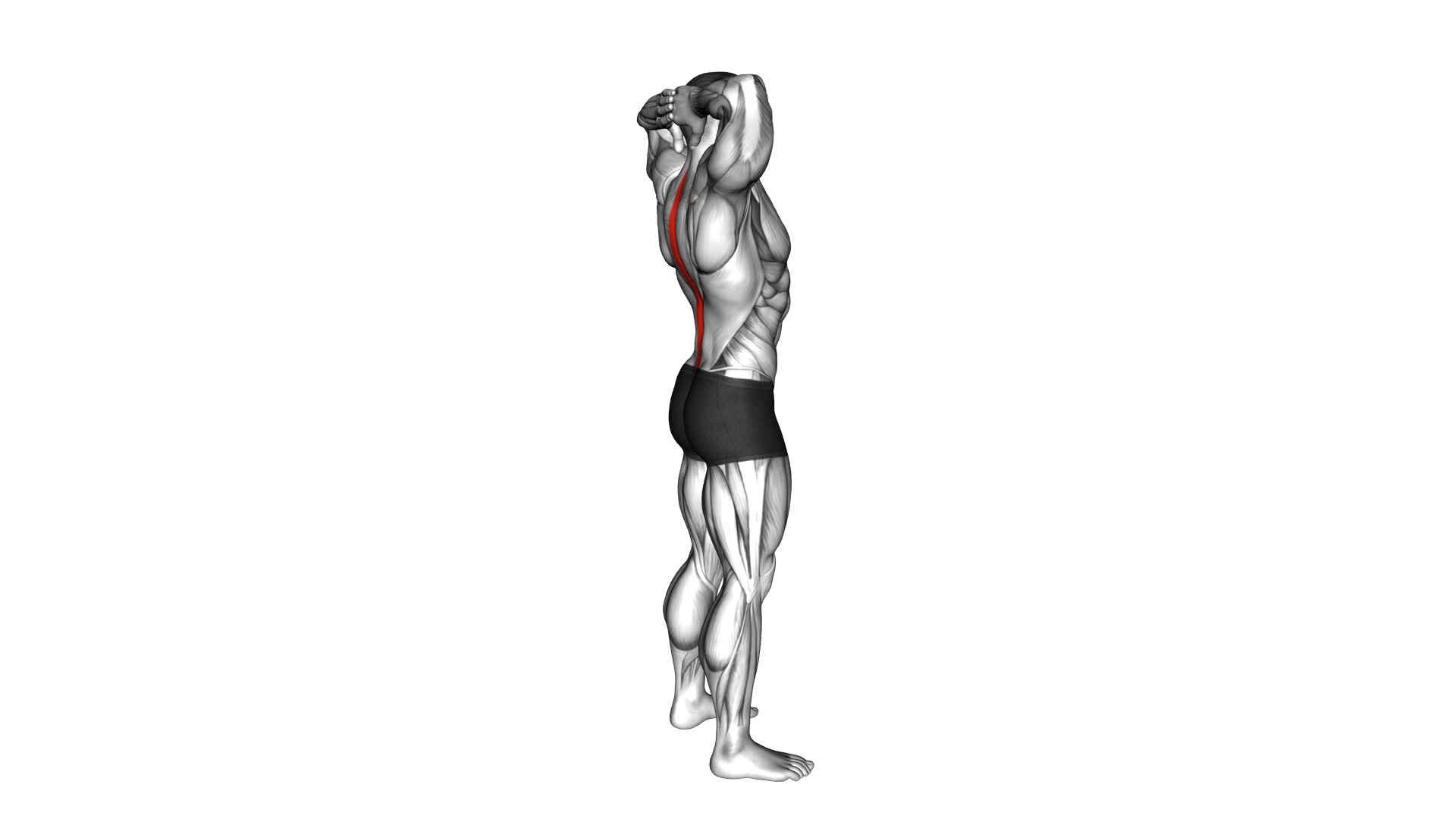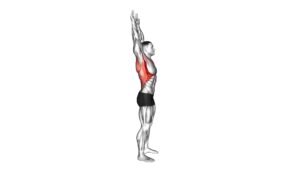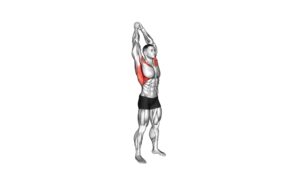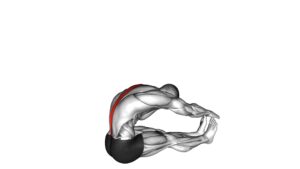Spine Backbend Stretch – Video Exercise Guide & Tips

Looking to improve your flexibility and strengthen your spine?
Watch This Exercise Video
Check out the Spine Backbend Stretch!
In this video exercise guide, we'll show you the proper technique, common mistakes to avoid, and modifications for all fitness levels.
Whether you're a beginner or advanced, this stretch can be incorporated into your routine to enhance your overall flexibility and promote a healthy spine.
So grab your yoga mat and let's get started!
Key Takeaways
- The Spine Backbend Stretch improves flexibility and increases strength in the back.
- It targets muscles along the spine and enhances posture.
- Proper technique includes standing tall with feet hip-width apart, lifting the chest towards the ceiling while engaging the core and activating the glutes.
- Common mistakes to avoid are arching the lower back too much, rounding the shoulders, allowing the neck to collapse, and not warming up before attempting the stretch.
Benefits of the Spine Backbend Stretch
Discover the numerous benefits of the spine backbend stretch to improve flexibility and strengthen your back. The spine backbend stretch offers a wide range of health benefits, including improved flexibility and increased strength in your back. This exercise targets the muscles along your spine, helping to increase their range of motion and flexibility. By regularly incorporating the spine backbend stretch into your routine, you can experience improved posture and reduced stiffness in your back.
One of the key benefits of this stretch is its ability to improve flexibility. As you perform the backbend, your spine is gently stretched, allowing the muscles and ligaments surrounding it to lengthen and become more pliable. This increased flexibility can help to alleviate tension and tightness in your back, making everyday movements easier and more comfortable.
In addition to flexibility improvement, the spine backbend stretch also strengthens the muscles in your back. As you bend backward, your back muscles are engaged and activated, helping to build strength and stability. This can be especially beneficial for individuals who suffer from back pain or poor posture, as strengthening these muscles can provide support and alleviate discomfort.
Proper Technique for the Spine Backbend Stretch
To properly perform the spine backbend stretch, follow these steps to ensure correct technique and maximize the benefits for your back. It's important to address common misconceptions and take necessary precautions and safety measures.
First, start by standing tall with your feet hip-width apart. Place your hands on your lower back, fingers pointing downwards. Take a deep breath in and gently lift your chest towards the ceiling, arching your back.
As you perform the backbend, remember to keep your core engaged and your glutes activated to protect your lower back. Avoid pushing your hips forward excessively or overarching your lower back, as this can strain your spine.
It is important to listen to your body and not push beyond your limits. If you feel any pain or discomfort, ease off the stretch immediately. Remember to warm up your body before attempting the spine backbend stretch to prevent injury.
When practicing the backbend, remember to breathe deeply and relax your neck and shoulders. Hold the stretch for 20-30 seconds and repeat as desired.
Common Mistakes to Avoid
To avoid common mistakes during the spine backbend stretch, focus on maintaining proper form and alignment. It's important to be aware of these mistakes and take steps to prevent them. Here are some common mistakes to avoid when performing the spine backbend stretch:
- Arching your lower back too much: While it's natural to curve your back during this stretch, excessive arching of the lower back can put strain on the spine. Keep your pelvis neutral and engage your core to maintain proper alignment.
- Rounding your shoulders: When performing the spine backbend stretch, it's common to let your shoulders roll forward. This can lead to poor posture and limit the effectiveness of the stretch. Instead, actively draw your shoulder blades down and back, keeping your chest open.
- Allowing your neck to collapse: Another common mistake is allowing your neck to collapse and strain forward. To avoid this, keep your neck in line with your spine and gaze upwards towards the ceiling. Imagine lengthening the back of your neck to maintain proper alignment.
Modifications and Variations for All Levels
Continue customizing the spine backbend stretch to suit your abilities and goals. As you progress in your practice, you may want to explore advanced modifications to challenge yourself further. These modifications can help you deepen your backbend and increase flexibility.
One advanced modification is the full wheel pose, where you lift your entire body off the ground, creating a deep arch in your spine. Another option is the standing backbend, where you perform the backbend while standing up, providing a different challenge to your core and balance.
For those who are just starting or prefer a gentler approach, there are preparatory variations that can help you build strength and flexibility gradually. One variation is the supported bridge pose, where you use props like blocks or a bolster to lift your hips off the ground, providing support to your back. Another option is the camel pose, where you kneel and arch your back, gradually working towards a deeper backbend. These preparatory variations allow you to ease into the backbend stretch and prevent any strain or discomfort.
Tips for Incorporating the Spine Backbend Stretch Into Your Routine
To incorporate the spine backbend stretch into your routine, consider adding it as a dynamic warm-up exercise before your main workout. This will help prepare your muscles and joints for the movements involved in the stretch, reducing the risk of injury.
Here are some tips to keep in mind when incorporating the spine backbend stretch into your routine:
- Start slowly and gradually increase the intensity of the stretch over time. This will allow your body to adapt and become more flexible without causing strain or discomfort.
- Listen to your body and pay attention to any discomfort or pain. If you experience any sharp or intense pain during the stretch, stop and consult with a healthcare professional.
- Engage your core muscles throughout the stretch to provide stability and support for your spine.
- Remember to breathe deeply and relax your body as you perform the stretch. Tension or stiffness can hinder your flexibility and make the stretch less effective.
- It's also important to maintain proper form throughout the stretch. Avoid excessive arching or twisting of the spine, as this can put unnecessary stress on your back.
- Finally, be patient and consistent with your practice. Gradually increasing your flexibility in the spine takes time and dedication.
Frequently Asked Questions
Is the Spine Backbend Stretch Suitable for Individuals With Back Injuries or Conditions?
If you have back injuries or conditions, it's important to take precautions when considering the spine backbend stretch. While this stretch can be beneficial for some, it may not be suitable for everyone.
It's best to consult with a healthcare professional or a qualified fitness instructor before attempting this exercise. They can provide guidance on alternative back stretches that are safer and more appropriate for your specific needs.
Can the Spine Backbend Stretch Help Improve Posture?
The spine backbend stretch can be beneficial for improving your posture. By incorporating this stretch into your routine, you can increase flexibility in your spine and strengthen the muscles that support proper alignment.
It helps correct rounded shoulders and forward head posture, which are common issues that can lead to poor posture. Regularly practicing this stretch can gradually improve your posture and contribute to a healthier and more aligned spine.
How Long Should I Hold the Spine Backbend Stretch for Maximum Benefits?
To reap the maximum benefits from the spine backbend stretch, it's important to hold the position for an appropriate duration. By maintaining the stretch for at least 30 seconds, you allow your muscles and connective tissues to gradually lengthen and release tension.
Holding the stretch for longer, such as 1-2 minutes, can further enhance flexibility and improve posture. Remember to listen to your body and avoid pushing beyond your comfort level to prevent injury.
Are There Any Warm-Up Exercises Recommended Before Performing the Spine Backbend Stretch?
Before performing the spine backbend stretch, it's important to warm up with some recommended exercises. Warm up exercises can help prepare your muscles and joints for the stretch, reducing the risk of injury and optimizing the benefits.
Incorporating warm up exercises into your routine can improve blood flow, flexibility, and range of motion. By incorporating these exercises, you can ensure that your body is adequately prepared for the spine backbend stretch and maximize its benefits.
Can the Spine Backbend Stretch Be Combined With Other Stretches or Exercises to Enhance Flexibility and Strength?
Yes, the Spine Backbend Stretch can be combined with other stretches or exercises to enhance flexibility and strength.
By incorporating variations of the Spine Backbend Stretch, such as the Camel Pose or Bridge Pose, you can target different areas of your spine and deepen the stretch.
Additionally, combining the Spine Backbend Stretch with yoga poses can provide added benefits, such as improved posture, increased core strength, and enhanced overall flexibility.
Conclusion
Incorporating the spine backbend stretch into your routine can provide numerous benefits. This includes improved flexibility and posture, increased spinal mobility, and reduced lower back pain. By following proper technique and avoiding common mistakes, you can ensure your safety and maximize the effectiveness of this exercise.
Additionally, modifications and variations are available for all fitness levels, making it accessible to everyone. So why not give the spine backbend stretch a try and experience its positive impact on your overall well-being?

Author
Years ago, the spark of my life’s passion ignited in my mind the moment I stepped into the local gym for the first time. The inaugural bead of perspiration, the initial endeavor, the very first surge of endorphins, and a sense of pride that washed over me post-workout marked the beginning of my deep-seated interest in strength sports, fitness, and sports nutrition. This very curiosity blossomed rapidly into a profound fascination, propelling me to earn a Master’s degree in Physical Education from the Academy of Physical Education in Krakow, followed by a Sports Manager diploma from the Jagiellonian University. My journey of growth led me to gain more specialized qualifications, such as being a certified personal trainer with a focus on sports dietetics, a lifeguard, and an instructor for wellness and corrective gymnastics. Theoretical knowledge paired seamlessly with practical experience, reinforcing my belief that the transformation of individuals under my guidance was also a reflection of my personal growth. This belief holds true even today. Each day, I strive to push the boundaries and explore new realms. These realms gently elevate me to greater heights. The unique combination of passion for my field and the continuous quest for growth fuels my drive to break new ground.







